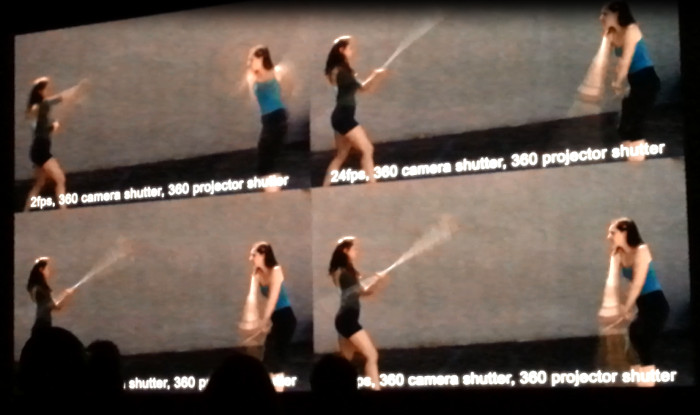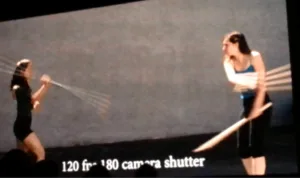Jonathan Erland used the Technology Summit on Cinema to run a 30-minute video on the goals and activities of the Pickfair Institute. Most of the video is captured and available below.
Erland is a 50-year industry veteran who has for decided to form the Pickfair Institute to advance cinematic options, but most particularly what he calls “creative frame rate”. This means all manner of fixed and frame rate capture, processing and rendering for playback at any number of frames rates too. Erland sees this as a tremendous creative opportunity that is clearly in its infancy in terms of technical capabilities and creative possibilities.
At the dawn of the cinema industry, the camera was hand cranked and the frame rate was tied to how fast or slow the operator turned the crank. This actually created some novel ways to capture images in creative ways – essentially, a variable frame rate capability. (The arrival of sound in the late ’20s meant a need for standardisation on fixed 24fps rates – Man. Ed.)
In the1980s, Doug Trumbull developed Showscan a 60 fps capture and display system, while in the modern era, The Hobbit was the first to capture and show movies at 48 fps. James Cameron has said the next two Avatar movies will employ variable frame rate capture – and perhaps display. Trumbull is now promoting a new cinematic experience with variable frame rate capture and has a demo film called UFOTOG to showcase the technique.
Erland sees creative frame rates as what a content creator does in choosing a frame rate (or varying frame rates) that help convey the artistic intent of the scene. The notion that the brain requires an image of 50ms for human perception is wrong. In fact, it can be as short as 8 ms, which is equivalent to 120 fps.
To start to better quantify the possibilities of creative frame rate, Erland used a high speed Vision Research Phantom camera to capture footage that could be processed in a variety of ways, essentially repeating a similar study done in 2008 by the BBC. They found that high speed acquisition was an oversampling technique that leads to the possibility of making shutter and motion blur adjustments in a post production process. All of Erland’s content was shot at 240 fps and 360 degree shutter angle, so represented continuous capture with no blank intervals.
Erland described over a dozen ways this content can be manipulated to create different frame rates, motion blur characteristics, strobing effects, fast and slow motion and more. For example, one technique is to integrate 10 frames of content (with equal density) to create one frame of final content (simulating continuous 24 fps projection with similar motion blur). Many of the examples in the movie show four versions of a configuration side-by-side. The photo below shows 2, 24, 60 and 120 fps.

To emulate a conventional film capture (24 frames at 180 degree shutter angle), one integrates 5 frames and drops five frames from the 240 fps capture. Other shutter angles and frame rates can be easily created in this same manner. These will show differences in motion blur and “strobiness”. Notice the strobed sticks in the shot below, even though it is displayed at 120 fps. This is corrected by moving from the 180 degree shutter to a 360 degree shutter.
Erland also introduced the concept of rolling integration. For this, one integrates a set of frame, say frames 1-10 to create frame A, frame B is created by integrating frames 2-11 and so on. This mimics the persistence of vision and is a techniques under the director’s control now – even within the same scene. Erland says this may be good to eliminate the “soap opera effect” often seen in HFR content. The rolling integration shots are shown below with variable “exposure” periods.


